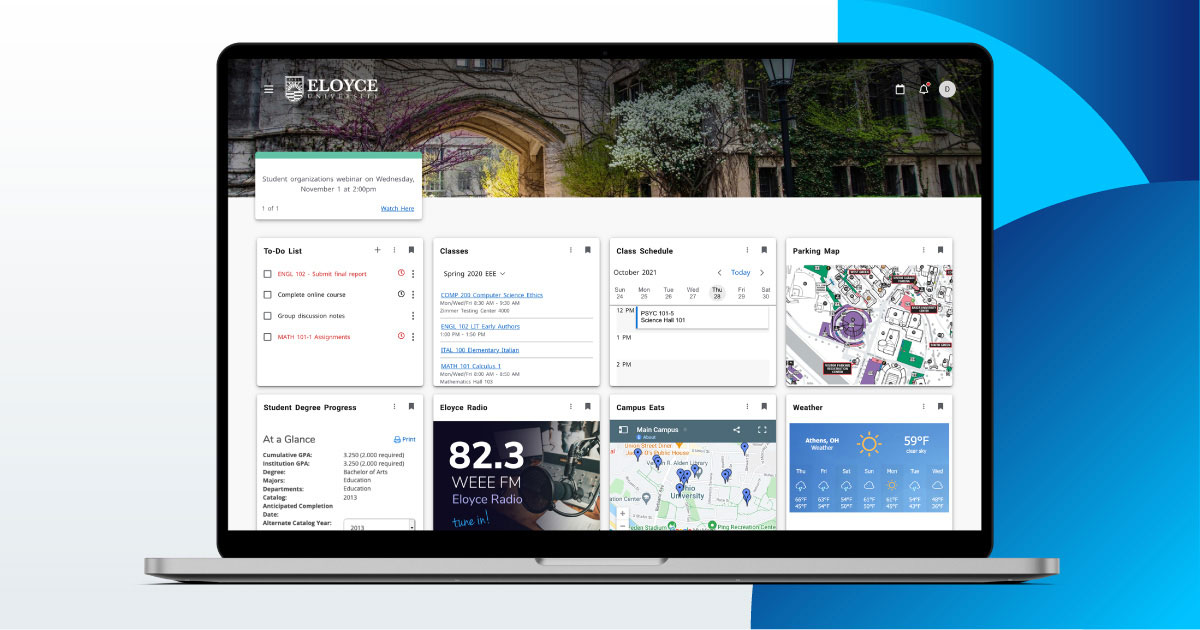By examining the past, higher education leaders can uncover new paths to future success. Community colleges today face immense challenges, but throughout their history, two-year institutions have always had to innovate to succeed under fast-changing circumstances. Across a century of growth, nowhere is the arc of community colleges’ evolution more clearly demonstrated than in California.
Serving over 2 million students annually across 116 institutions, California community colleges (CCCs) are the largest and most diverse public system of higher education in the U.S. As such, the CCCs can be seen as a microcosm for the progression of two-year institutions nationwide. “Community colleges evolved to meet the needs of a changing society in America, and California was the proving ground for this new kind of educational institution,” writes Dr. George R. Boggs. “They would become the most accessible, affordable, and innovative sector of higher education and would respond quickly to the needs of students, communities, and local businesses.”
By taking a comprehensive look at how the CCCs have progressed in step with—and often ahead of—the rest of the American higher education sector, we can better understand how community colleges came to play such an essential role in fulfilling local and vocational demands, as well as imagine new ways to overcome the obstacles they face today. One resource doing exactly that is A College for All Californians: A History of the California Community Colleges, which tracks the CCCs from their inception as “junior colleges” in the early 1900s through a century of rapid growth and innovation that would reverberate throughout U.S. higher education.
A College for All Californians is edited by Dr. Boggs, president and CEO emeritus of the American Association of Community Colleges, and co-editor Dr. Lawrence A. Galizio, president and CEO of the Community College League of California. Together, with a team of contributing experts in higher education, they chronicle how the CCCs have adapted to social and economic pressures throughout history, along the way revealing how community colleges can map new pathways in the future.
Defining the mission of community colleges
As A College for All Californians covers in depth, the modern community college owes much to deep roots planted and cultivated in California. Two-year institutions began to take shape in the U.S. in the late 1800s, with the first sustained public community college established at the turn of the century as Joliet Junior College, just outside of Chicago. “The junior college may have started in Illinois,” writes Boggs, “but it was California that provided the leadership for its expansion.”
Junior colleges were built as extensions of secondary education and were first legally authorized by the 1907 California Upward Extension Act. With this support, California quickly grew their network of institutions over the next two decades, establishing 49 junior colleges across the state, each offering curriculum particular to the workforce needs of their local communities. “California’s district system was the most important junior college innovation of the 1920s,” writes Boggs. “It proved so remarkably responsive to the needs of individual communities that other states moved quickly to pass similar legislation.”
These were early signs of the influence CCCs would have on the burgeoning community college sector. In 1932, the Commission of Seven—a panel formed by the Carnegie Foundation for the Advancement of Teaching—delivered a landmark report titled State Higher Education in California that pushed for junior colleges to focus on vocational training, rather than transfer pathways to four-year institutions. Additionally, the Commission of Seven introduced the designation “community institution,” which soon became “community college” as the concept picked up support in higher education circles. Finally, the Truman Commission of 1947 solidified the term while making community colleges the focus of national education policy and expansion.
Far from a surface-level change, this new nomenclature more clearly articulated community colleges’ mission for accessible and locally relevant workforce development. And its etymology can be traced back to the earliest days of the CCCs’ history. Boggs and Galizio emphasize this significance: “In many ways, [California community colleges] are democracy’s colleges, reflective of the ideals that shaped the United States; they offer an open door to opportunity to all who would come, are innovative and agile in meeting economic and workplace needs, and provide value and service to individuals and communities.”
Longstanding debates over community college governance
While community colleges may have settled into a democratic niche in higher education, their own internal governance models remain hotly debated. In the technology sector, when we discuss governance we most often refer to data governance—the policies and systems managing the use of and access to institutional information. But on a wider scale, governance in higher education describes the complex processes that structure power-sharing and decision-making across an institution, district, or system.
Because secondary education was one of several key influences on the development of community colleges, their governance structure initially followed that of K–12 schools in which senior administrators maintained a hierarchical power structure. In their progression to the shared governance model known in California today, the CCCs underwent many legislative changes drastically affecting their organization structures and funding models.
While these beats are particular to California, they echo those of many other U.S. community colleges. “The evolution of statewide and institutional governance in the California community colleges reflects the political and economic issues influencing public higher education in the state, and it illustrates national trends in education and the larger political economy,” writes Galizio. By chronicling the history of these influences and the legislature they catalyzed, Galizio demonstrates how governance structures are shaped by historical context.
While governance is far from uniform across U.S. community colleges, Galizio argues that the history of the CCCs reflects “policymakers’ struggles to identify (a) how and where these comparatively modern institutions fit within the statewide public educational structure, (b) what type of accountability and governing regime sufficiently recognizes their strong local affiliation, and (c) their ultimate migration from more hierarchical primary and secondary institutions into a higher education milieu where participatory governance is the norm.” How those structures will continue to evolve—for California and the rest of the U.S.—remains to be seen.
Pioneering student support services
Like many community college systems, the CCCs must address social and financial inequities to best serve a diverse and often low-income student body. In pursuit of this mission, the CCCs have developed a robust and historically notable system of support services that contributor Leslie M. Salas, dean of Counseling Services at Palomar College in San Marcos, California, traces back through the network’s history.
The first higher education support services in California tightly focused on academic progress, a carryover from four-year institutions. Noninstructional services soon emerged, however, as needs for financial aid assistance, articulation, career guidance, and more were identified by service personnel at California junior colleges. These informal resources were recognized in an official study in 1947, but likely dated back to the earliest days of California’s junior colleges. They would establish precedents that would later influence how those programs would eventually be authorized and mandated by legislation.
In its history, the CCCs have developed many support programs ahead of the legislative curve. One notable example is the Puente Project, piloted in 1981 by Patricia McGrath and Felix Galaviz, with the goal of increasing the enrollment, retention, and transfer rates of Mexican American and Latinx students. Another is the Cooperative Agencies Resources for Education (CARE) program. CARE was the first of its kind to support the educational outcomes of low-income students with counseling, mentorship, supplies, grants, and other resources.
“Though state funding for these initiatives would still need to be won in the decades ahead, the CCCs continued innovating for more robust and specific student support services,” Salas writes. That specificity has primed the CCCs to create programs in support of African Americans, foster youth, undocumented students, and other marginalized groups. Many of these programs have directly or indirectly catalyzed similar efforts across the U.S.
Looking ahead
Challenges in higher education are nothing new, though the current issues affecting community colleges are unique, as A College for All Californians addresses. “During their more than 110 years operating as public institutions of higher education, California’s community colleges (CCCs) have confronted and endured a myriad of socioeconomic, environmental, and political crises and challenges,” Galizio writes.
As the mission of community colleges has evolved throughout the 20th century, the CCCs have been at the forefront of the issues most directly impacting community colleges across the country—from the post-World War II boom to the implementation of statewide plan legislation. With each turning point, the CCCs have adjusted course and pressed forward.
“Still,” Galizio reflects. “Few eras can compare with the 2019–2020 academic year...” Higher education institutions were radically affected by the COVID-19 pandemic, but none more so than community colleges, which continue to struggle to regain their previous enrollment numbers. Amid new coronavirus variants and ongoing debates over how to deal with them, uncertainty seems to be the only given.
And yet, the arc of history outlined in A College for All Californians is proof enough of community colleges’ endurance. Whether serving 28 students out of Fresno High School in 1910 or over 2.1 million statewide in 2019, the CCCs have always adapted to disruptions and made the most of opportunities. Likewise, no matter the circumstances, students will continue to learn. Faculty will continue to teach. And community colleges will continue living up to their name, identifying and filling the needs of their communities.




